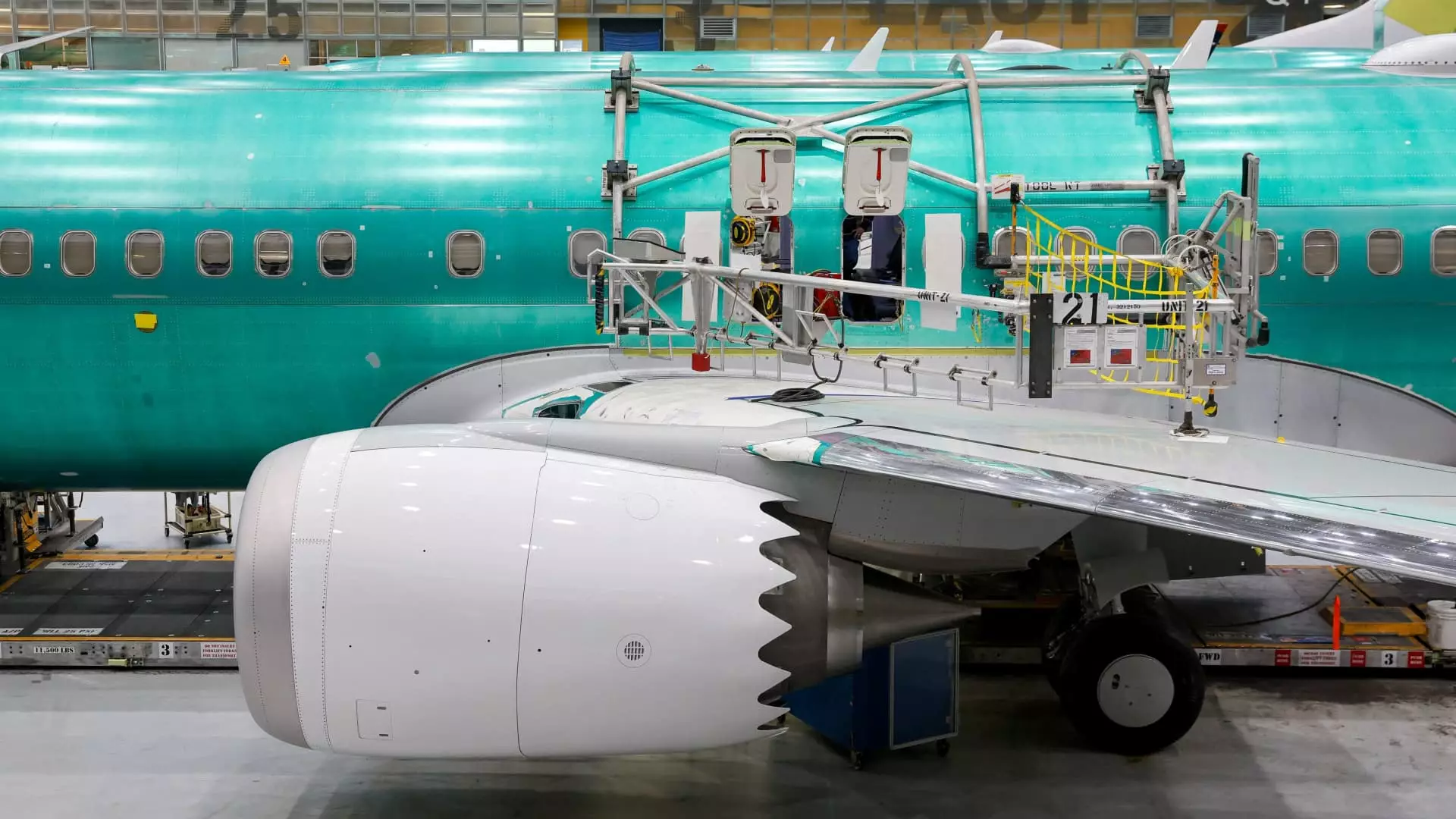Boeing stands at a crucial juncture, striving to restore its reputation which has taken quite a hit in recent years. The turning point came roughly a year ago when an alarming incident occurred involving a Boeing 737 Max 9 operated by Alaska Airlines. During a flight, a fuselage panel fell off midair, exposing an emergency exit, and although the aircraft managed a safe landing in Portland, Oregon, the event raised serious concerns about the safety and quality of Boeing’s manufacturing processes. Investigators found that essential bolts were missing from the aircraft, painting a disturbing picture of oversight failures at Boeing’s Renton facility.
The fallout from this incident was stark, as evidenced by the drop in Boeing’s stock price, which plummeted over 30% within the same period, contrasting sharply with the S&P 500 Index’s notable increase. Such a disparity highlighted Boeing’s struggle to regain its footing in a competitive marketplace increasingly dominated by scrutiny and skepticism.
In response to these upheavals, Boeing has taken significant steps to instigate positive change across its organizational structure and operational standards. The company overhauled its leadership team, ushering in new executives, including Kelly Ortberg, a seasoned figure in aerospace, to take the helm. This change represents more than just a shift in personnel; it’s an embodiment of Boeing’s commitment to fostering a culture prioritizing safety and quality over profit margins.
Under Ortberg’s guidance, Boeing has implemented systematic random quality audits across its factories to mitigate potential manufacturing defects. By working closely with subcontractors like Spirit AeroSystems, Boeing has taken measures to ensure the integrity of 737 fuselages, tackling longstanding issues related to production efficiency. Implementing changes to eliminate “traveled work,” which refers to inconsistencies in task execution, has been central to this effort. Employees have also benefitted from increased training opportunities, bolstering their expertise and vigilance in manufacturing practices.
The vestiges of safety concerns have attracted heightened scrutiny from regulators. Following the fuselage incident, the Federal Aviation Administration (FAA) intensified its oversight over Boeing’s manufacturing processes, instituting caps on production volumes for its flagship 737 Max model. The FAA’s leadership has made it unequivocal that Boeing’s rehabilitation is not a fleeting endeavor but necessitates deep-rooted cultural changes that prioritize rigorous safety protocols.
FAA chief Mike Whitaker’s candid acknowledgment of the challenges facing Boeing underlines the need for a shift in corporate mindset. Expressing that Boeing’s path to recovery is a long-term undertaking, he emphasized the vital need for sustained vigilance from both Boeing’s management and regulatory bodies. The combination of proactive measures and genuine commitment to enhancing quality and safety is what will ultimately dictate the company’s fate in the aviation industry.
Despite these measures, Boeing has been grappling with severe financial setbacks. Since 2019, the company has endured staggering losses amounting to over $30 billion, a consequence of production delays and issues tied to quality management. The company’s failure to post a single annual profit since 2018 — the year of two catastrophic 737 Max crashes — has underscored the urgency for systemic change within Boeing.
As the company navigates through a labor landscape that has become increasingly contentious, recent strikes by Boeing machinists reflect the fine balance between operational efficiency and workforce satisfaction. Although a new labor agreement resulted in significant pay increases for workers, key issues such as pension reinstatements remain contentious. The idling of production during the strike further complicates Boeing’s struggle to deliver aircraft on time, especially as it competes with rival Airbus.
Looking ahead, Boeing lays out a roadmap centered on stabilizing production and cautious growth. While the company is keen on ramping up the production of its aircraft, it must first iron out existing flaws in its manufacturing process. Kelly Ortberg’s philosophy of focusing on fewer tasks while maximizing quality rather than spreading resources too thin suggests a strategic pivot that could redefine Boeing’s operational landscape.
The road to recovery is laden with challenges, but the changes implemented at Boeing show promise for a brighter future. Engaging with industry leaders, fostering a culture of excellence, and remaining resolute in addressing the embedded issues will determine Boeing’s trajectory in a fiercely competitive market. Boeing’s journey towards redemption is not merely about restoring profit margins; it is fundamentally about rebuilding trust and ensuring the safety of passengers globally.

